#fantasy culture
Text
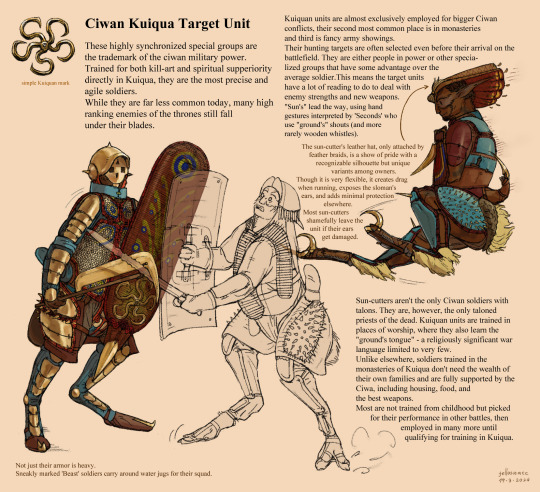

Welcome to a long one.
The Ciwan empire is the fastest-growing sloman power ever since the war of continents and the first to discover a form of gunpowder (thanks to their enemies being uniima lls who have been using it long before).
But even with that advantage (among slomen), the Ciwan armies are iconic for a different reason. That being the Kuiqua-trained units that Sun-cutters come from.
These units have traditionally existed for hundreds of years but are slowly just becoming a symbol for show because of the political and battling changes in the world. However, you will still see them from time to time ripping people to pieces.
Just like the majority of sloman military groups the unit relies on intense teamwork, they need constant communication and preplanned routes to deal with the opposing strategy.
The simplified average scene might look something like this:
In one unit of 30 members, three strikers (Sun-cutters) make a plan with their scholars and commanding Fire-catchers (Seconds leaders). After getting to the war zone they wait for their window in which some members spy or communicate with deeper army spies. When they know their target and best strategy they get in. The strikers use hand gestures, clicks, or whistles to save energy while the Seconds forward the orders to the rest with "ground's" (war language), wooden whistles see more use in very large units. Many times, however, often just seeing the movement of the sun-cutters is enough for the whole group to act.
Strikers will sometimes wait behind their heavies (Beasts) if their force isn't necessary (units can be as few as 5 members or as many as 50, the two extremes work very differently). Once the situation calls for it, they bullet their targets, often stabbing talons first and tearing muscles in a swift motion. This may happen multiple times as other unit members engage in direct battle with the target/s or disarm them with specialized tools. Kuiqua units both kill and capture, having healing supplies on their heavies if they need to make sure their target doesn't bleed out (or their own soldiers).
All members of the Kuiquan unit are priests of different levels but all are priests of the dead (ones that speak for their ancestors rather than gods). It's believed lands conquered with these soldiers present will flourish with life. Many former battlegrounds have turned into gardens and crop fields (hopefully they don't keep this up when landmines are invented).
To the image. What you see is a small variety of soldiers. Beasts and fire-catchers have other names and features in their armor that they are known for based on all their roles that can often switch between fights. Only Sun-cutters truly have one name.
Fire-catchers are also sometimes strikers in training and may move up if they prove themselves. Though, more often Sun-cutters rise from the ranks of regular taloned soldiers with enough talent.
-
As mentioned in the image, Sun-cutters tend to be very prideful. Their helmets are an impractical mess that pushes their ears forward. A Ciwan Sloman's ears are very important to them and if they are damaged it's a career-ending event. Still, almost no strikers bind their ears, not wanting to be shamed for cowardness.
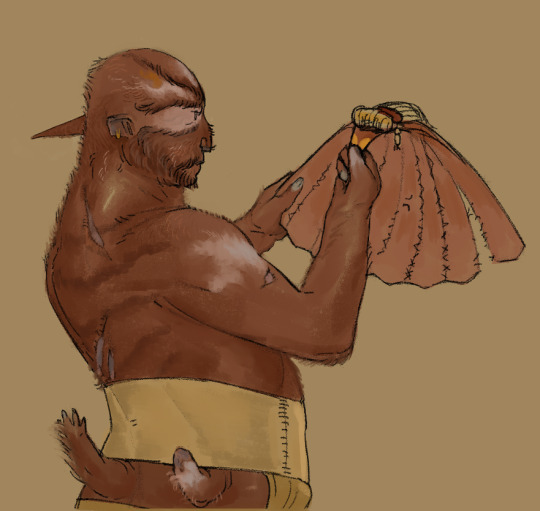
an ex-striker
here is the whole picture if you prefer it big

Btw, Kuiqua is the city Neal lives in. He has met or been arranged to meet these units multiple times since Neal himself is stuck classified as a fancy soldier. They are also not uncommon around temples, small talk is required.
Thank you for reading this far! Next I must answer the questions of biology. This has taken me 50 000 years.
#art#speculative biology#artists on tumblr#digital art#artwork#worldbuilding#speculative evolution#spec bio#sloman culture#slomen#fantasy culture#alien culture#character design#illustration#sloman military
483 notes
·
View notes
Text

Gwlanad and Uminno fayons trading goods.
#illustration#worldbuilding#original species#speculative biology#spec bio#art#fantasy#sokiin#fayons#fantasy culture
119 notes
·
View notes
Note
Happy WBW! 🗺 - How many countries are in your world? Feel free to share as much/little about them as you wish!
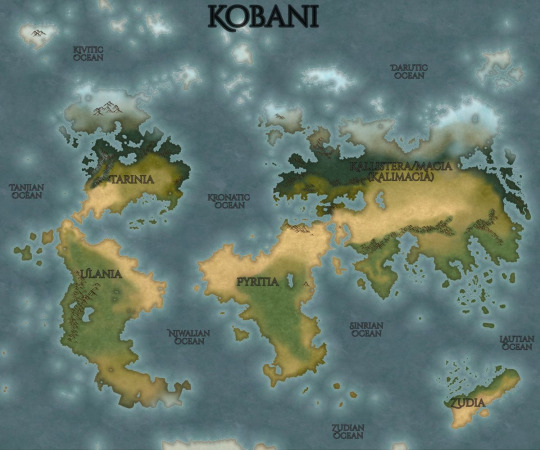
So "Country" is a bit complicated. There are relatively few "countries" in the modern sense, however if we take country to mean land, or cultural/lingual/ or political groups there is somewhere around 229 "countries."
For example, Kishetal is a land, its people are Kishite and speak the Kishic language, however it is composed of many smaller city-states, so in actuality Kishetal would be dozens of tiny countries, but I am counting it as a single cultural entity, "Kishetal". Think of it the same way that you would think of Greece in the Classical Era. There was no single state called "Greece" yet the Greeks/Hellas were still an identifiable group and region.

Here is a complete list of all 229 regions/lands!
Names which are highlighted in red have a majority (>50) forestfolk (non-human) population.
Below!
Kalimacia
1 The City-States of Kishetal
3 The Kingdom of Shabala
4 The City-States of Korithia
5 The Kingdoms of Ikopesh
6 The City-States of Baalkes
10 The Makoric Colonies and Makora
11 The Elusian Tribes
12 The Queendom of Kulayu
13 The Kingdoms of Dirsia
14 The Ikeniic Tribes
15 The Janic Tribes
16 The Nislic Tribes
17 Konlun Confederation
18 The Larlisi Tribes
44 The Republic of Shaab
45 The 100 Kingdoms of Sinru
46 The Nengalish Empire
47 The Kingdom of Kashalun
48 The Southern Ukarrian City-States
49 The Northern Ukarrian City-States
50 The Kingdom of Saekat
51 The Republic of Nuret
52 The Nomadic Tribes of Palluyad
53 The Kingdom of Baban
54 The Kingdoms of Jezaan
55 The Nomadic Tribes of Western Makia
56. Central Makia
57 Eastern Makia
58 The Tribal Confederacy of Zahur
59 The Gutic Tribes
60 The Four Kingdoms of the Kimersians
61 The Unartic Tribes
62 The Nabaric Tribes
63 The Kingdom of Anjaz
64 The Kingdom of Dalba
65 The Kingdom of Vadrus
66 The Empire of Batricca
67 The Bochalic Tribes
68 The Galudic Tribes
69 The Obsidian Peoples
70 The Sassoni Tribes
71 The Rokiti Tribes
72 The Vjordi Confederacy
73 The Sea Tribes of the Thun
74 The Liturgii Tribes
75 The Hurtish Kingdom
76 The Gaedish Clans
77 The Bulakic Tribes
78 The Shumuya Chiefdoms
79 The Luduric Tribes
80 The Yanikurti Tribes
81 The Isunim Tribes
82 The Lulivatic Confederacy
83 The Kingdoms of Kushek
84 The City-States of Hangutia
85 The Zurrian Tribes
86 The Shurbi Nomads
87 The Suhurid Kingdoms
88 The Ubkhuz Clans
89 The Inrusi Kingdom
90 The Wuduji Tribes
91 The Chiefdoms of the 4 Sisters (Akuri)
92 The Sud Tribes
93 The Belavus Nomads
94 The Pauri Nomads
95 The Quina Confederacy
96 The Eastern Whale-Eaters (Ungilu)
97 The Western Whale-Eaters (Yagilu)
98 The Giant Tribes of Jonluria
99 The Nenshit Tribes
100 The Chiefdom of the Yevunuk
101 The Chukakic Tribes
102 The Ice Walkers of Tilkulkut
103 The Svarui Tribes
104 The Rudi Tribes
105 The Umul Tribes
106 The Funikic Tribes
107 The Orudishi Tribes
108 The Chakatat Nomads
109 The Republic of Xir
110 The Jushi City-States
111 The Tiwa Nomads
112 The Northern and Southern Siji Kingdoms
113 The Kingdom of Goguke
114 The Tum-xi Democracy
115 The Temna Kingdom
116 The Empire of the Jamun
117 The Eket Tribes
118 The Mu Dynasty
119 The Runashu Kingdom
120 The Xianti Theocracy
121 The Kumtai Empire
122 The Nanampa Kingdoms
123 The City-States of Pya
124 The Kingdom of Panyu
125 The Kingdom of Junjat
126 The Kingdom of Burta
127 The Republic of Utkaj
128 The Kingdom of Pinlinga
129 The Chiefdom of Angubat
130 The Chiefdom of Kai
131 The Chiefdom of Du
132 The Democractic Tribes of Latshu
133 The Queendom of Busira
134 The Oligarchic Houses of Daoku
135 The Kingdom of Malu
136 The Republic of Jini
137 The Kingdom of the Jagi
138 The Great Cities of the Viat Sea-Kings
139 The Kingdom of Phangui
140 The City-States of Mekan
141 The Oligarchy of Ewru
142 The Land of Seven Crowns (Bhurka)
143 The Musimwam Empire
144 The Takala Empire
145 The Kavuru Kingdom
146 The Indosi Tribes
147 The Balijivuri Empire
148 The Ship-Builders (Kikiruru)
149 The Wuru Queendom
150 The Domain of the Pearl Lords (Panshu)
151 The Cholyasi Thalassocracy
152 The City-States of the Vatkapa
153 The Tribes of the Kurupaja
154 The Kingdom of Kanpuduta
155 The City-States of Janji
156 The Five Houses of Pun
157 The Kingdom of Arani
158 The Kingdom of Diruwa
159 The Republic of True Diruwa
181. The Inkul Tribes
182 The Waste (Uninhabited)
Pyritia
2 The Kingdom of Apuna
7 The City-States of Knosh
8 The Kingom of Satabul
9 The Tribes of Pyria
19 The Kingdoms and Tribes of Namut
20 The Houses of the Aguru
21 The Kingdom of Akal
22 The Oligarchy of Eb
23 The City-States of the Sahuri
24 The Musahati Empire
25 The Ungwa Confederacy
26 The Bon Confederacy
27 The 9 Cities of the Zabudi
28 The Su Tribes
29 The City-States of Yorungo
30 The Dumu Tribes
31 The Desert Nomads of Azu
32 The Empire of Oparudu
33 The Kwi Tribes
34 The Hasa Tribes
35 The Kingdom of the Ruk
36 The Kingdom of Urururu
37 The Xhosi Tribes
38 The Merchantile Kingdoms of Pan
39 The Republic of Odi
40 The City-States of the Coral Queens (Zuwi)
41 The Zun Tribes
42 The Empire of Zunduba
43 The Isles of the Ru
Zudia
160 The Kingdom of On
161 The Families of Gungwari
162 The Families of Ninkuduri
163 The Families of Uruninj
164 The Families of Waardugoi
165 The Families of Gumwarnugoi
166 The Families of Amanwonguri
Tarinia
167 The Dorthuit Tribes
168 The Four Bands of the Tlinkuat
169 The Wakshianic Tribes
170 The Alkugu Confederacy
171 The Beoguk Tribes
172 The Shumee Tribe
173 The Cahata Republic
174 The Powangic Tribes
175 The Linu'k Tribes
176 The Chanta Tribes
177 The Sepochee Tribes
178 The Pokunu Tribes
179 The Carupa Tribe
180 The Arawaino Tribe
181 The Inarwai Tribe
182 The Okalokee Tribe
183 The Yupu Tribe
184 The Wall-Builders (Missishikoa Confederation)
185 The Chatacua Tribes
186 The Mindakolo Tribe
187 The Iokatoo Tribe
188 The Grass Warriors (Susudi and Shoshok)
189 The Tuz Kokone Tribes
190 The Chinoho Tribe
191 The Satlugulish Republic
192 The Adushunic Tribes
193 The Chumiwokic Tribes
194 The Corn Peoples (Nalap)
195 The Zanuzi Tribe
196 The Wakoni Tribe
197 The Serrahavi Tribe
198 The Atawakapa Tribe
199 The Chemepano Tribes
200 The Desert Dancers (Hutlipotizec Empire)
Ulania
201 The Clans of the Paguai
202 The Atahcutec Empire
203 The Southern Yupu Tribes
204 The Tikoto Tribes
205 The Guya Tribe
206 The Jivargua Tribe
207 The Conura Tribe
208 The Anapapre Tribe
209 The Fifteen Pijano Cities
210 The City-States of Agataba
211 The Cura Tribes
212 The 8 Sisters of the Nañagua
213 The Zamoba Tribe
214 The Lake Confederacy (Upuwawa)
215 The Tere Tribe
216 The Karavante Tribe
217 The Kayib Tribes
218 The Kingdom of Xapajo
219 The Musahatic Colonies
220 The Zabudic Colonies
221 The Charuru Empire
222 The Island Kingdoms of the Po'kukua
223 The Nomads of the Green (Ukabawu Tribes)
224 The Kiwa'wano Hunters
225 The Ikayuguaya Tribes
226 The Olmayuk Tribes
227 The Daokipaqa Kingdom
228 The City-States of the Naonomi
229 The Acaniruana Mountain Kingdoms
Did I need to do this whole list? Probably not
If y'all have any questions about one of these "countries" send me an ask! Even if its just the number haha
#worldbuilding#fantasy#writeblr#fantasy map#fantasy culture#testamentsofthegreensea#fantasy writing#writing#fantasy world#narul#wbw#wbw asks
14 notes
·
View notes
Text
The Bvanu People
The Bvanu Gnomecir, commonly called Bvaneim or the Bvanu People, are a diasporic, often nomadic, people who defy easy categorization. They have been alternatively described as a race, an ethnicity, a religion, a society, a school of thought, and/or a neurotype. Bvaneim may embrace or reject any of these labels to varying degrees, but generally agree that the Bvanu People defies reductive categorization into any one of them, opting instead to describe themselves simply as a people.
Literally translated, their name means “children of the knowledge-seekers” and refers to their heritage as descendants of those who fled the destruction of the Gnomec College. The question of “Who Is/Isn’t Bvanu?” is contested within the Bvanu community but generally includes any descendants (adopted or blood-related), any converts to the Bvanu religion, or anyone who can access Bvanu memories through the craft of mnemonec dreaming.
The ethnogenesis of the Bvanu people can be traced back at least to the society of the Gnomec College, though a proto-Bvanu people existed in the region for centuries prior. However, due to the practice of outgathering outlined in the Gnomec Charter and their displacement following the destruction of the College, they can be found across the world with diverse cultural and religious traditions.
Bvanu are more likely to identify as queer than the general population, though whether this is due to an actual higher incidence of queer people or a culture that is just more open & accepting of queer identity is up for debate. There are three widely recognized sexes with corresponding gender roles in Bvanu culture—male, female, and liminal—though transgender & non-trinary identities are generally accepted as well.
The Bvanu neurotype is a neurodivergent spectrum that overlaps (but doesn’t correspond one-to-one) with ADHD & autism. Due to differences in how they process information, Bvaneim commonly experience texture, photo, and frequency sensitivities that can be unpleasant, if not debilitating. A notable example of this is a sensitivity to the hum that emanates from certain energized metals like honeygold; this can make it easier to hear said hum, but can also be overwhelming if exposed to energized metal for too long or in high enough quantities. Differences in neurological makeup are understood to be a part of what enables Bvaneim to practice mnemonec dreaming.
The Bvanu religion is a gnomec-mnemonec tradition, emphasizing knowledge and memory. Bvanu gnomecism revolves primarily around their holy text, the Bvanu Librarium, and study at Bvanu Academia, while their mnemonec practice involves the keeping of commemorative holy days, the wearing of symbolic traditional clothing, and mnemonec dreaming.
They use a lunar-solar calendar with holy days that mark phases of the moon, seasonal/solar events, and historical events they consider significant. The most important Bvanu holy day coincides with an astrological event called the Indigo Moon and memorializes the destruction of the Gnomec College.
#bvanu#bvanu religion#bvanu culture#bvanu nuerotype#fantasy race#fantasy culture#fantasy religion#fantasy ethnicity#fantasy#worldbuilding#magic system
8 notes
·
View notes
Text
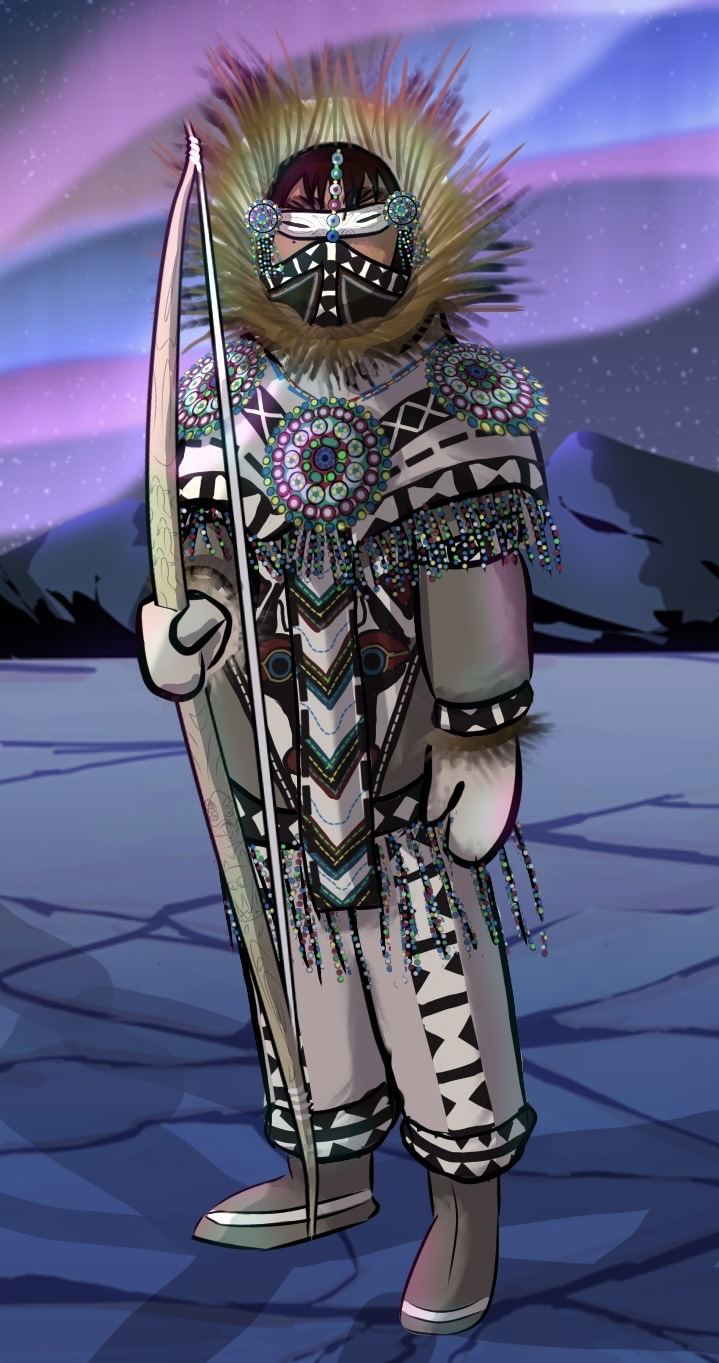
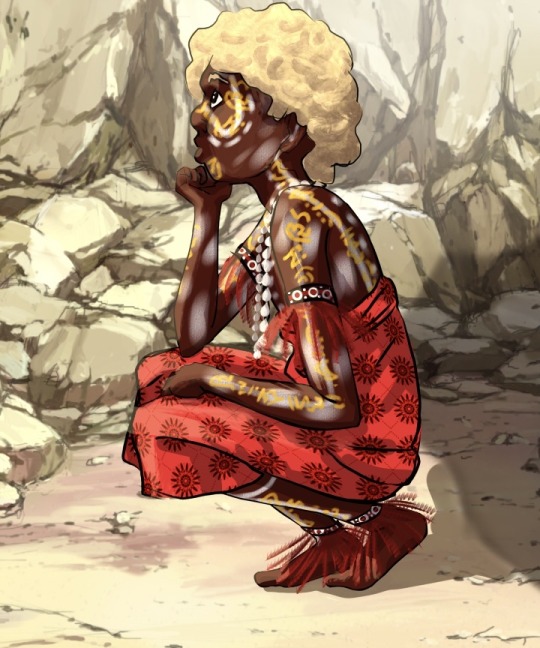


I made another one
#art#illustration#digital art#digital drawing#oc artwork#albinism#fantasy#fictional cultures#fantasy culture#loosely inspired by#inuit#rromani#quechua#aboriginal australian
13 notes
·
View notes
Text
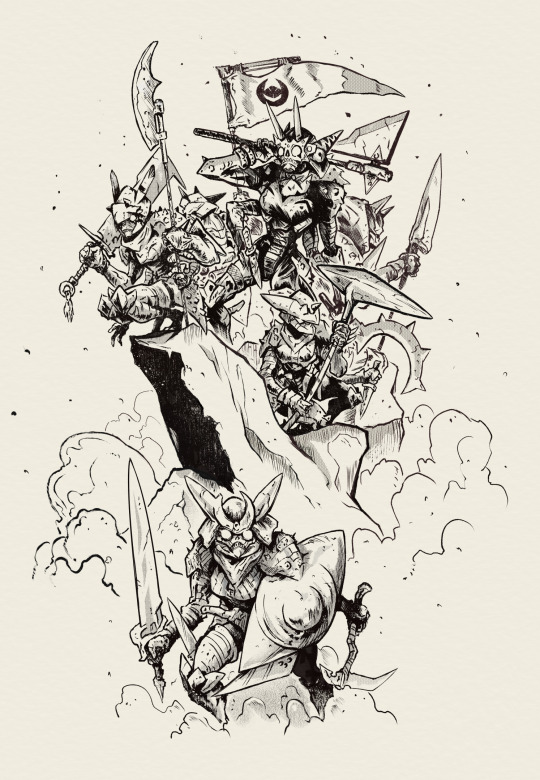
The Goblin Guard & the Shivan Elite.
Created from massive shaping kilns, they are four armed, pack a lot of stabby things and love a good scrap.
Faction from my comic Kill Witch Kill.
#comicart#ink illustration#inkart#goblin girl#goblins#fantasy warrior#fantasy culture#fantasy art#female warrior#killwitchkill
35 notes
·
View notes
Note
It is once more WBW! What is an “unappreciated detail” of your world that you feel deserves more attention?
@zebee-nyx I want you to know I love you and appreciate your questions, even when I don't answer them on time. Thank you!
You know what people don't appreciate enough in worldbuilding general? Or in real life geopolitics? FOOD. Omg, I wrote like a 4000 word essay about food for work one day -- all the sources all at my fingertips lolol. But instead of me recreating it... here's the first worldbuilding post I did of this year:
How to Make Mass-Make Ethical Coffee in World without Coffee Beans
You need:
- A fistful of mushroom powder (ground from dried dehydrated/salted mushrooms)
- A foot-long branch of pine needles (not fur!)
- A pot of water
- (Optional) Honey
- (Optional) Milk or Cream
Step 1: Remove pine needles from the branch. Rinse if necessary and remove the needle sheathes if you can (also not necessary).
Step 2: Bring water to a boil.
Step 3: Remove the water from heat and put the pine needles in. Let sit until desired pine-tea strength.
Step 4: Pour powder into the top of the coffee pot -- where the filter will keep it from falling through to the belly below.
If you do not have a special coffee pot, a hang the powder in a cheesecloth above a cauldron.
Suspending the coffee above the part you will drink will reduce potential unpleasant after tastes, as well as filter out any impurities from the ingredients.
Step 5: Bring the pine tea back to a boil. Immediately remove and pour the pine tea over the mushroom powder in a circular motion. Let the coffee begin to brew and drain into the belly or cauldron slowly. With a cauldron, you may have to do this multiple times to get the desired taste -- pouring the coffee back and forther between cauldrons.
Step 6: (Optional) Bring the milk or cream o a simmer with the honey and whisk until frothy. Whisk this mixture into the coffee and serve. Alternatively, just pour the yummy additions into your drink directly. We don't judge!
Step 7: Depending on the saltiness of the mushrooms, another pinch of salt may be added to bring out the flavor. Drink and enjoy!
#fantasy food#fantasy culture#fantasy recipe#recipe#writeblr#food#coffee#worldbuilding#amai answers#yssaia#amaiguri
13 notes
·
View notes
Text
Mask etiquette in Milrathi
Gold - reserved for the admirals and advisors of the veiled throne
Porcelain - while not officially enforced, it's seen as impolite to use porcelain unless you are a mask artisan yourself
Silk - using silk as a mask is a very touchy subject, as the veiled throne is covered in it, and wearing it in a mask has historically been a statement of revolution against the highest authority. It is, however, used by people who have dedicated themselves completely to physical arts, such as athletes, dancers and prostitutes, as a mark of their intense focus on freedom of the body
Mother-of-pearl and seashells - Mostly used by fisherfolk, kept by some if they join the navy rather than using the standard cloth masks
Leather - Preferred by caravan-drivers for its hard wearing and malleable nature. It allows them to modify it and display their wealth as they accumulate it.
Cloth - Cloth masks are used by soldiers and labourers. They are easy to wash, block out the dust of their dry homeland and allow them to still breathe fine. Useful in salt pits and for marking one's military rank on.
Most people still prefer the old reliable clay though
Symbols on masks are fairly self explanatory - if someone puts an expensive object on their mask, they probably want everyone to know that money is an important priority for them. Symbols are most often used in order to show religious affiliation, given the wide range of usurper deities that seem to crop up from all the incredibly powerful magicians visiting the mountain. Religion can be rather important to people in the region, and affiliation tends to remain similar across generations, hence the baking of holy symbols into the masks. Whether the deities they worship actually do any deity-ing anymore is not a thought that crosses many people's minds. Some families have even forgotten what the deity whose mark they wear was even meant to represent in the first place. However, a fairly common deity to worship in the salt pits is the eponymous God of Salt, who is one of the more responsible magician-turned-gods and now lives in a tower next door to the biggest salt mine. What people think of their nation's most powerful god persisting in the mortal realm is a matter of debate. Some think he should go and create his sacred land to cede from mortality like a "proper" god, while others think he's of more use (and more manipulable) if he can see the plight of the salt miners around him. If anyone had asked the magician, he would probably say "Why would anyone create a sacred land dedicated to salt. There's enough salt here." or perhaps "Get out of my tower!"
He does care for the salt miners and the extraction of the mineral, though, otherwise he wouldn't be able to work such potent magic on the mines. What a nice fellow. His mask is made of salt, which aside from being the obvious choice for a god of the stuff is also a symbolic gesture to show kinship with the pit miners who breathe the desiccated air all day.
7 notes
·
View notes
Text
You know, orcs are typically portrayed with porcine features; upturned snouts, tusks, pointed ears... And commercial pigs mainly eat grains like corn and soy. Sure, they're technically omnivorous, but I get the feeling that if orcs were real, they'd have a very similar diet.
What I'm trying to say is that orcs would have an agrarian society.
163 notes
·
View notes
Text
I feel like most fantasy media has demons and devils and various other similar entities are depicted exclusively as evil things that you can't even make alliances with because they're going to screw you over no matter what.
Well, why not do something different to what's standard.
I've already talked about how maybe the word demon itself could have different meanings and connotations depending on the language and culture of the person saying it, so hey maybe some demons could just be entirely normal people just living in the underworld who don't even have any devilish powers.
Maybe some demons who do have powers could grant their powers primarily as a way of getting to experience the locations outside of the underworld while minimising the risks that truly leaving could entail.
Some could even be taken advantage of due to desperately wanting to see the world above.
You could also just have a location whose culture just sees making deals with demons for power as a standard part of life.
Additionally, if this location was surrounded by others that regard demons with the typical destain seen in fantasy they'd probably end up being quite isolated in terms of trade and culture, which might then lead to the people there seeking even more power from demons so they can be self-sufficient.
#fantasy ideas#fantasy setting#fantasy locations#fantasy culture#fantasy politics#fantasy language#technically i guess#world building
78 notes
·
View notes
Text
So because I am strange and always fascinated by posing cultural questions when it comes to creating crossover fanfiction, I had this wild thought worm recently for no reason: If you dumped Link (Legend of Zelda) into Thedas (Dragon Age), how the fuck would everyone in Thedas react to him?
I mean, depending on how you interpret Link's character, he doesn't talk. At all. I've always been of the opinion he speaks via some form of generalized Sign Language, but Why Would Thedas Share Any Common Signs? And who's to say there IS a formalized sign language in Thedas? Maybe there is, but it's technically a dead language now. The Elvhenan were fucked up but extremely modernized, so maybe they did have a Sign Language. Maybe the Dalish still have a lot of it, because Sign is a great way to silently communicate and Not Alert The Asshole Shemlen.
Either way, Link doesn't talk. And even if he can communicate via Sign Language, I highly doubt Hylian sign is gonna be understood. So there's one issue.
Secondly: Hylians don't look exactly like Theodosian elves. Modern elves of Thedas are scrawny and small but not too small; eyes bigger than a human and with cat-like night vision. Link? Link is canonically 5'2" and quite fit. Not skinny built and quite healthy, generally soft nonbinary features, bright eyes (at least in recent games; Link's got big fucking blues that almost glow for a nice contrast in TotK/BotW), pointy but not super pointy ears. Compared to Theodosian elves which are designed to look "distinctly fantastically different" in comparison to humans, Link just looks like a very short human with elf ears. So people might get a bit baffled at his looks; he's elfy but to the left.
Third: Hyrule isn't anti-magic. Magic is so inherently tied into everything in all the Legend of Zelda games, we the players just accept it. Link can wield magic rods and staves with no issue. Gerudo can use fire magic or summon lightning storms. Link can use magical items to summon winds, or devices that can magically transport him far distances. Rito can summon gales instinctually. Zora have water/ice magic and healing powers. If Link dodges correctly, he can seemingly slow time for a moment to deal a flurry attack. He uses Rauru's arm's magical abilities without blinking. The Master Sword is literally the ultimate magical item with a spirit inside of it.
Can you imagine Link losing his weapon in battle and just picking up a staff without thinking, but WHOOPS Thedas is kinda religiously anti-magic and someone is watching him just SUDDENLY THROWING ICE SPELLS (thinking about those magic staffs in BotW/TotK with the default AoE ice spell) without any hesitation? That is Not Normal for them like it is for Link. And Link himself like... Serves a powerful princess with the bloodline of a goddess. She literally tosses around light magic and time magic and shit. He probably can't begin to fathom a society that shuns something that so integral to Hyrule/Hyrule's safety in the face of Ganondorf's machinations.
Idk this was a bizarre thought worm I had. Maybe I will write a fanfic. Maybe I won't. It's interesting to think about in an extremely nerdy way, lol.
(also Link would HATE Solas but LOVE The Iron Bull and The Chargers. Prove me wrong, I dare you.)
#legend of zelda#Link#totk#botw#dragon age#fanfiction#headcanons#idk these are the strange thoughts i get#random tangents#fantasy culture
12 notes
·
View notes
Text
-Outdated flora, rest is good-

Some basic coverage on wood


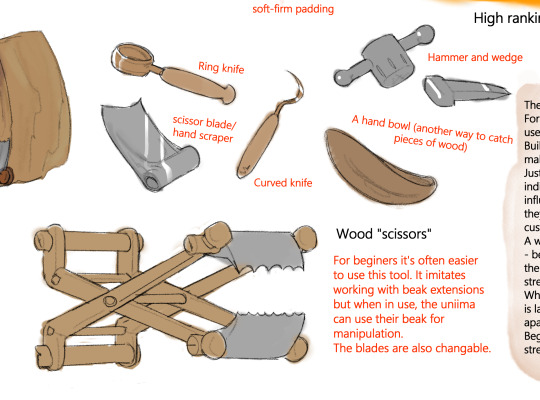


Some zoom-ins since it's probably unreadable at that scale
#digital art#art#artists on tumblr#artwork#speculative fiction#speculative biology#speculative evolution#spec bio#wood#uniima c#uniima#fantasy#fantasy culture#worldbuilding#guide#speculative fantasy
218 notes
·
View notes
Text
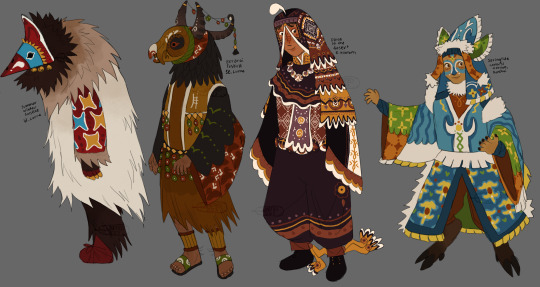
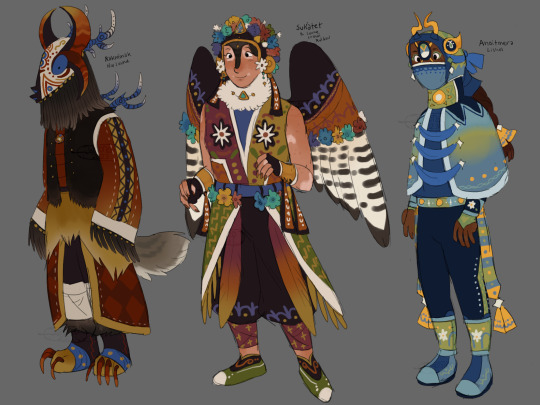
Some outfits for festivals on Morweav :)
#worldbuilding#concept art#speculative biology#original species#fantasy culture#clothing design#sokiin
256 notes
·
View notes
Text
Holidays of Hallownest
So I just saw an absolutely gorgeous art piece by @mebis-art-dump which in addition to be being completely fantastic(please check them out) also asked about what holidays Hallownest would practice. It really got me thinking.
Wyrmalia: Basically just a Saturnalia expy name wise but actually is pretty far diverged in practice. This is a holiday celebrating the death and the Wyrm and the rebirth of the king. During this holiday bugs swap out their masks for different ones and hold a small funeral for the previous owner of the mask they’re wearing. Generally the masks worn are those which belonged to dead family members. It’s thought by wearing their masks it gives them some semblance of life for a single day. During this time the mask wearer takes on the identity of their mask in full. It’s a celebration of past lives and accomplishments while also being a way to symbolically lay ghosts to rest.
The Festival of Lights: A celebration of the bright gods and higher beings of Hallownest. Pale lanterns are released into the city of tears to drift until the festival ends. Generally the festival lasts the equivalent of a week in our time. The King and Queen would generally make an appearance in the city and from there go on tour throughout Hallownest during this festival. It’s customary to burn small offerings to whatever higher being you follow in addition to the traditional sacrifices given to the king(generally some sort of live non sentient bug-some bugs believed a more vicious sacrifice like aspids or in rare circumstances garapedes would gain the kings favor.). During the festival most bugs would swap out their cloaks and clothing for brighter colors, and the upper class would generally wear pale cloaks.
Rootsday: A day celebrating the bountiful harvest the White Ladys boon provides. This is effectively thanksgiving and the feasts would generally last the entire day, with preparations being done in the weeks leading up to it. Unn actually benefits from some of the worship from this holiday as well. She was worshiped by many of the farmers of Hallownest in addition to the pale lights. Stuffed gruzzers and boiled gulka are staple foods of this holiday.
Dawnsday: Nearly completely erased by the Pale king in his effort to kill the radiance only a few faithful moths even remember this holiday. Those who do make a pilgrimage to the crown of Hallownest at dawn(or dusk) to worship at the last shrine to the old light. It’s said this holiday was originally a day where dreams and reality mixed and one’s wildest fantasies could come true, now it’s merely a way to keep the Radiance alive.
The Day of Sealing/Day of mourning: This holiday only came to exist after Hollow was sealed. All bugs in the kingdom wore black or pale white cloaks and went about the entirety of their day in silence. Not many bugs really knew what the holiday was for beyond paying their respects to the Hollow Knight and dreamers who had saved them from the infection. Silent prayer sessions for the Dreamers and Knight were held at the black egg temple. This holiday actually served as a supplemental means of strengthening the seals and prevent the dreamers from dying, the residual power of these prayers is what elevated Hollow to godhood and allowed the dreamers to persist past the fall of Hallownest. This holiday largely ceased to exist once the infection returned.
Deepnest has its own holidays too, but I think I’ll probably make a separate post for them and for greenpath and maybe dirtmouth.
Happy holidays y’all!!
#hollow knight#holidays#headcanon#hk pale king#hk hollow#worldbuilding#fantasy culture#fantasy holidays#i’d love to hear your thoughts#happy holidays
14 notes
·
View notes
Text

History is fun. historical fashion is even more fun!
#fantasy clothing#fantasy culture#fantasy art#doodle#sketch#my art#digital drawing#my artwork#writing#creative writing
13 notes
·
View notes
Text
Harpy Culture in a Nutshell
Harpy Culture is the simplest to homogenize, but the most complicated to understand. It is based off of 4 major things
It's a caste system based on the intelligence of the bird you where born as (corvids on top, flightless birds on the bottom)
Most Harpies do not live in a country, they much prefer the simplicity of migration; following the prey they hunt. Due to this, they only have what they call "hunting rights" on certain pieces of land, with no clear boarders.
The women tend to be taller and stronger than the men. This due to the fact that back when they were constantly surviving, the men, with their brighter feathers and more striking appearance, would lead the predator away from their nest, while the woman would stay and fight if the predator would not go for the bait. This made it so the men preferred stronger mates to protect the children, and women faster more agile mates, in hopes he'd be more likely to come home alive.
It is a matriarchal society. Women more likely to go out and fight, and hunt while the men say home to care for the young.
While it is uncommon for most Fae to attack their own kind, Harpies are known to have minor skirmishes within their own ranks, fighting for control of certain hunting grounds.
78 notes
·
View notes